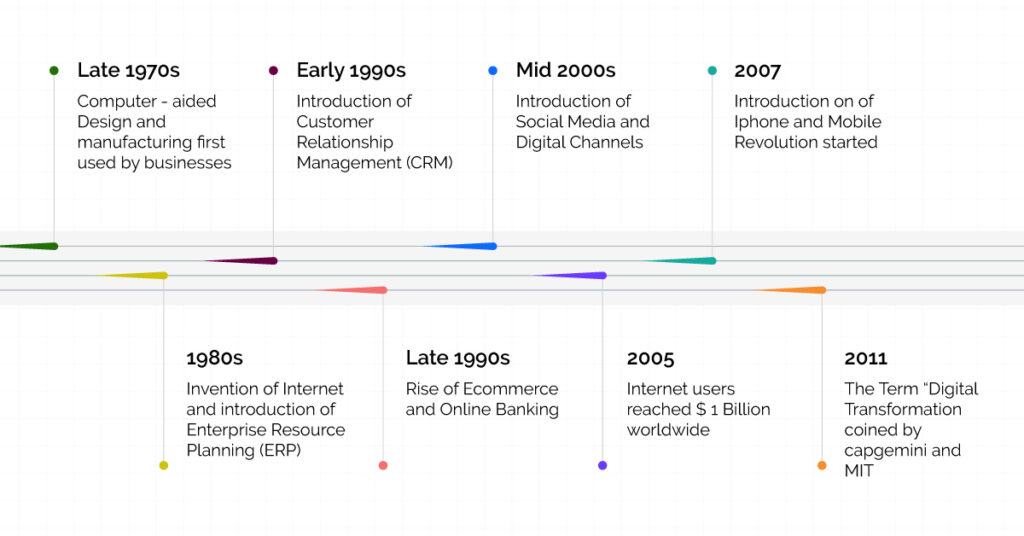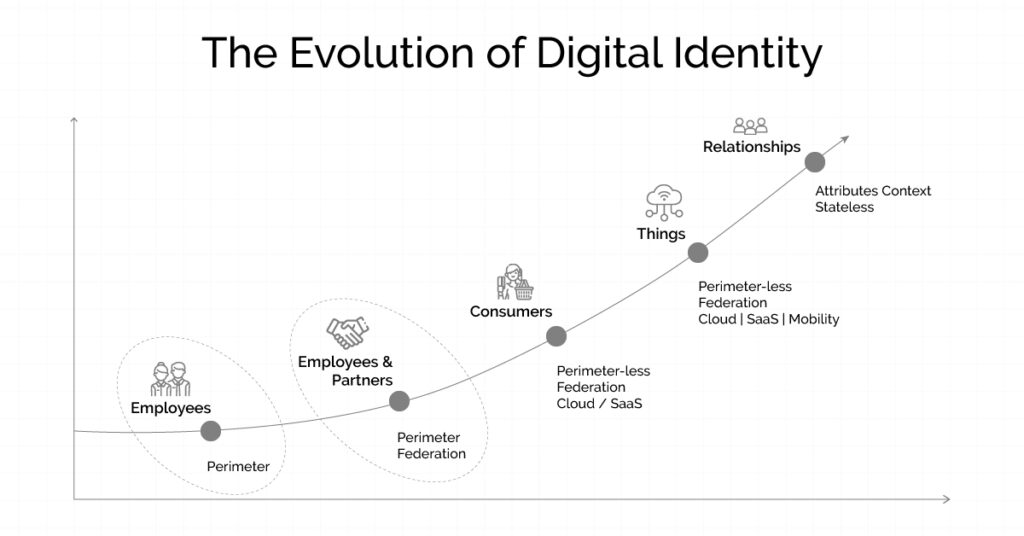
More on Technology
Innominds and Qualcomm Collaborate to Drive Enterprise Digital Transformation with High-Compute Edge AI Platform
-
Team Eela
Did you know? The term “digital transformation” was coined in 2011 by Capgemini in partnership with MIT. They defined digital transformation as using technology to improve performance or the business’s reach radically. Companies started defining the meaning of digital transformation in 2013. In this article, we delve into the history of digital transformation, discussing its origins and growth over time.
Digital transformation integrates digital technology into all business areas, fundamentally altering how companies run things and provide value to their clients. Additionally, it’s a cultural shift that necessitates constant status quo challenge, experimentation, and comfort with failure on the part of organizations.
Although the history of digital transformation dates back decades, it gained significant attention in recent years. The utilization of computer-aided design and manufacturing in the late 1970s marked a milestone, followed by the introduction of enterprise resource planning in the 1980s and customer relationship management in the early 1990s, shaping the trajectory of digital transformation.
These technologies aim to enhance efficiency and productivity by digitizing manual procedures. In the late 1990s, there was a surge in eCommerce and online banking, initially conducted offline but gradually shifted to the online realm as internet speeds improved. Subsequently, in the mid-2000s, the introduction of social media brought about a revolutionary change in how people communicate and exchange information.
The internet started the shift from a siloed world into a global one. The introduction of the World Wide Web digitally connected businesses to their customers via Websites. Furthermore, with the birth of social media, the digital channels for communicating with customers increased.
As companies started to embrace the contemporary internet and comprehend its influence on their operations, a significant transformation occurred with the arrival of the iPhone and the subsequent rise of mobile technology. This development ushered in limitless opportunities, novel business approaches, and the advent of social and mobile platforms, fueling another surge in digital transformation.

Digital Transformation started as the next step in the digitization revolution. Digitization began in the 1940s with microchips and semiconductors shifting analog computing to digital computing. In the 1970s, Data entry jobs increased to help businesses convert their analog records to digital data. In the 1990s, the World Wide Web became publicly accessible and integral by the decade’s end. By the 2010s, digitizing analog and manual systems reached their culmination, paving the way for the impending wave of the next digital transformation revolution.
With the introduction of digitized channels (like websites and social media) and devices (such as smartphones and even on-location kiosks), companies could easily connect with customers. Soon companies realized the need for a digital process that would not only support these interactions but pull data that could be used to create valuable experiences for both the company and the consumer.
Enterprises established interconnected networks of tools and systems across departments, aiming to optimize their marketing and sales channels, harness consumer data and experiences, and even streamline internal operations.
Seeing the demand, software providers began developing digital platforms (think CMS and DXP) that suddenly made it possible to strategically implement digitization throughout an entire organization instead of on a per-project basis. Thus, digital transformation was born.
When companies first started using digital channels, they were only focused on connecting with their customers. This was followed by the emergence of digital processes to support customer interactions. As companies’ digital ambitions grew, they started to change their workplace and have a digital team to manage new social and mobile channels. Increasingly, work is becoming digital, mobile, and social. Changes in Technology, demographics, and the workplace are driving this shift.
Paper-based record-keeping was the norm in the past, but this was replaced by businesses turning to digital systems. By moving to a Digital-record-keeping system, businesses can save time and money on storage, retrieval, and managing records.
Digital transformation has radically altered the way people live and work. The expansion of mobile devices and apps has made connecting and collaborating with others easier than ever. The rise of cloud-based tools has made it easier to share information and stay connected.
There is a shift from a traditional linear customer engagement model in which companies push out messages to customers acting to models focusing on two-way communication and data sharing. Additionally, they leverage customer insights to drive personalization through their ongoing digital transformation strategies. As a result, more organizations started to focus on digitalizing their business, which led to an exponential growth in digital transformation.

The historical shift from paper-based to digital processes, driven by the need for automation, efficiency, and improved customer engagement, has paved the way for digitization and subsequent digital transformation. As businesses strive to remain competitive in the global market, the adoption of digital transformation is expected to rise. While successful digital transformation can boost profits, customer engagement, and productivity, not all companies can fully harness its potential, leading to failures in their transformation journey.

More on Technology